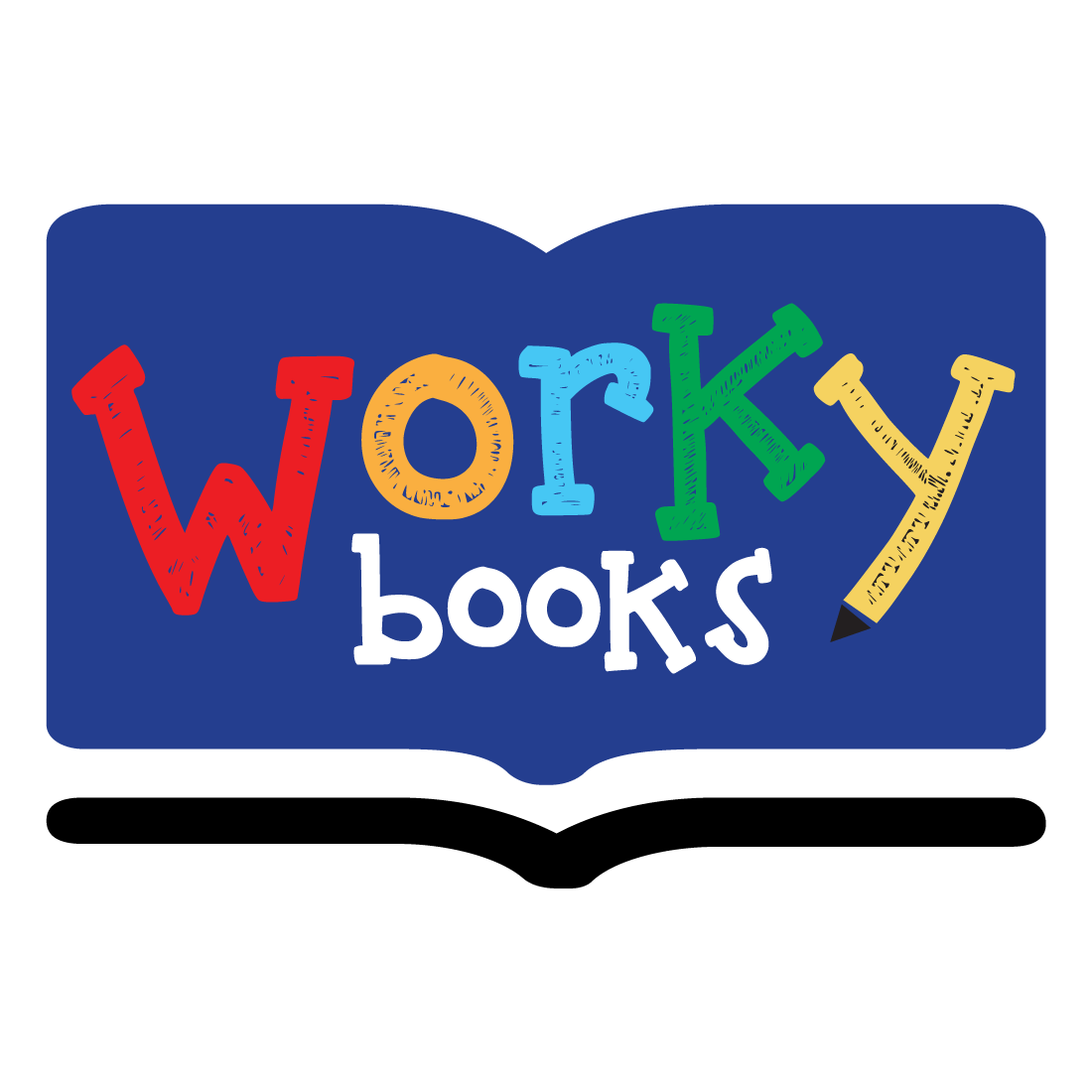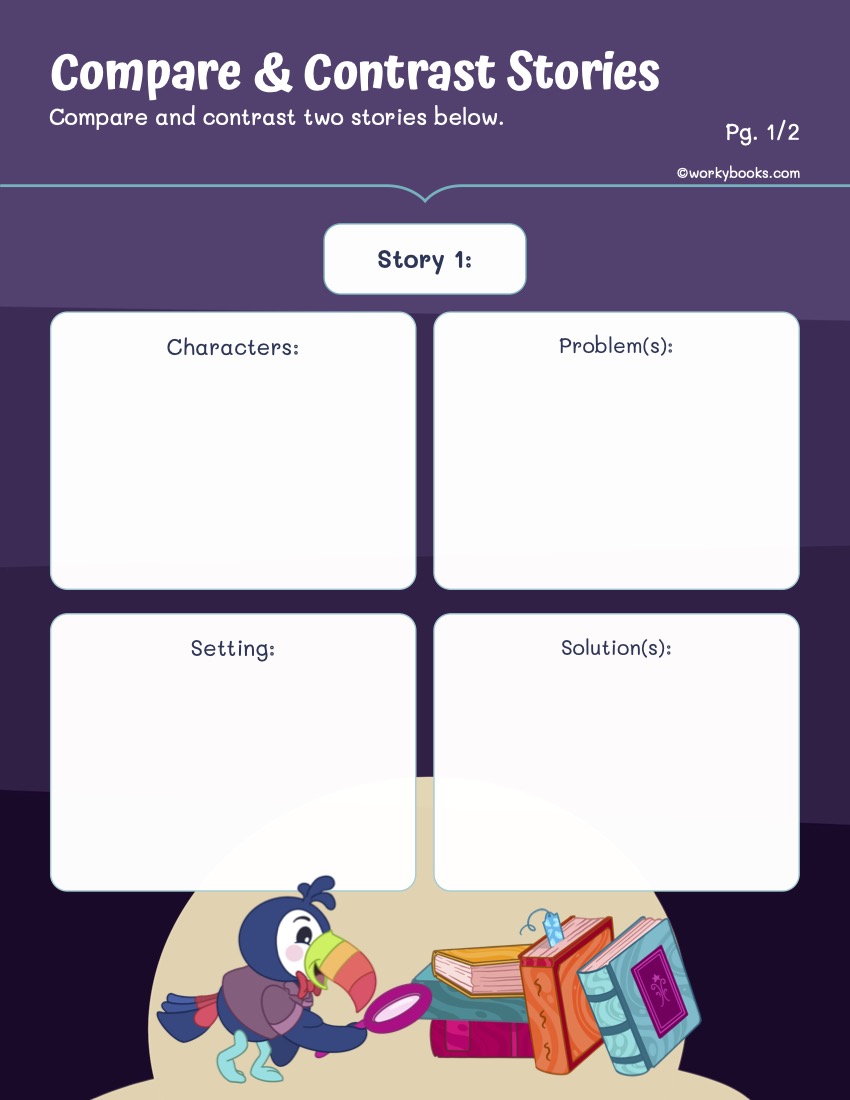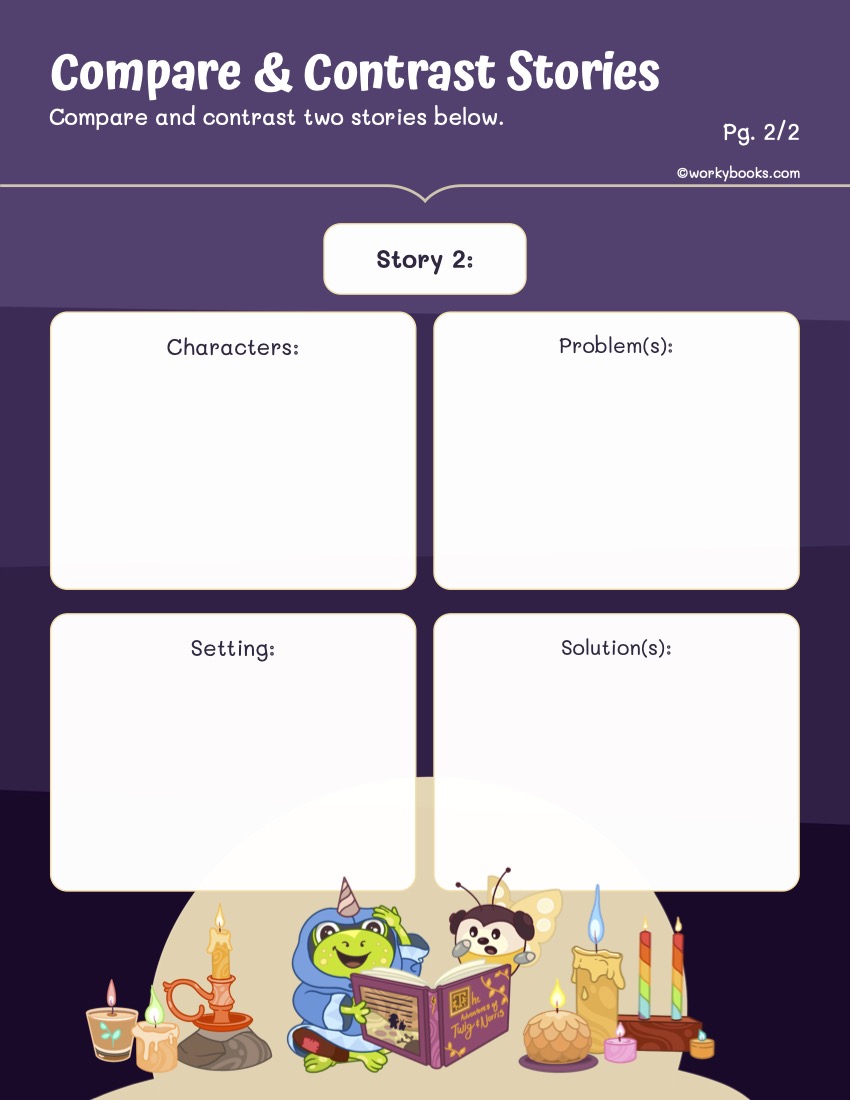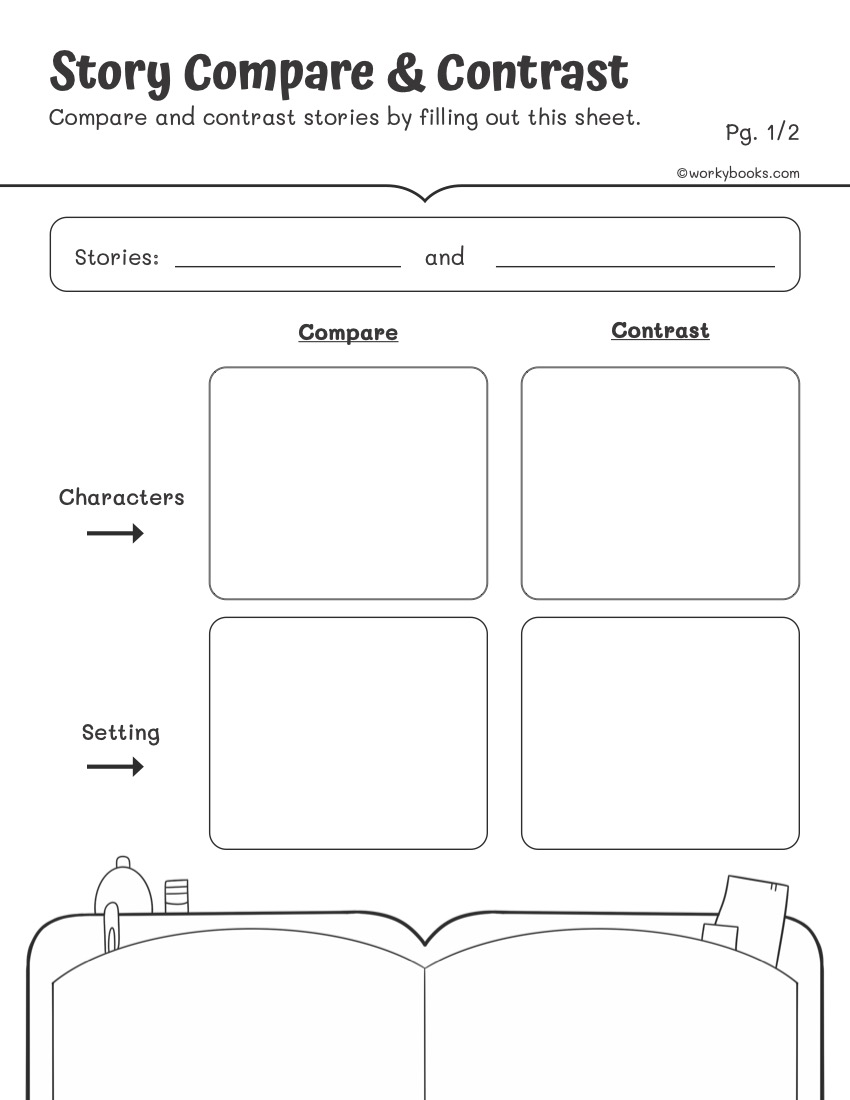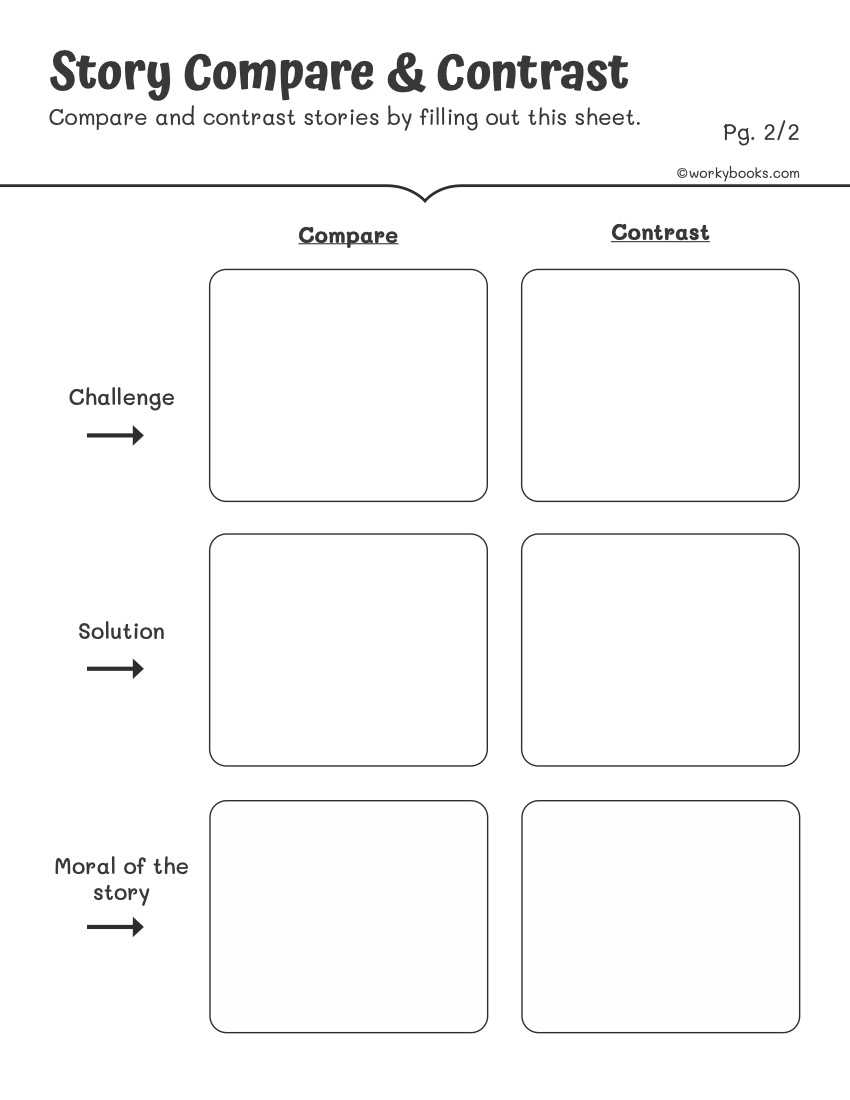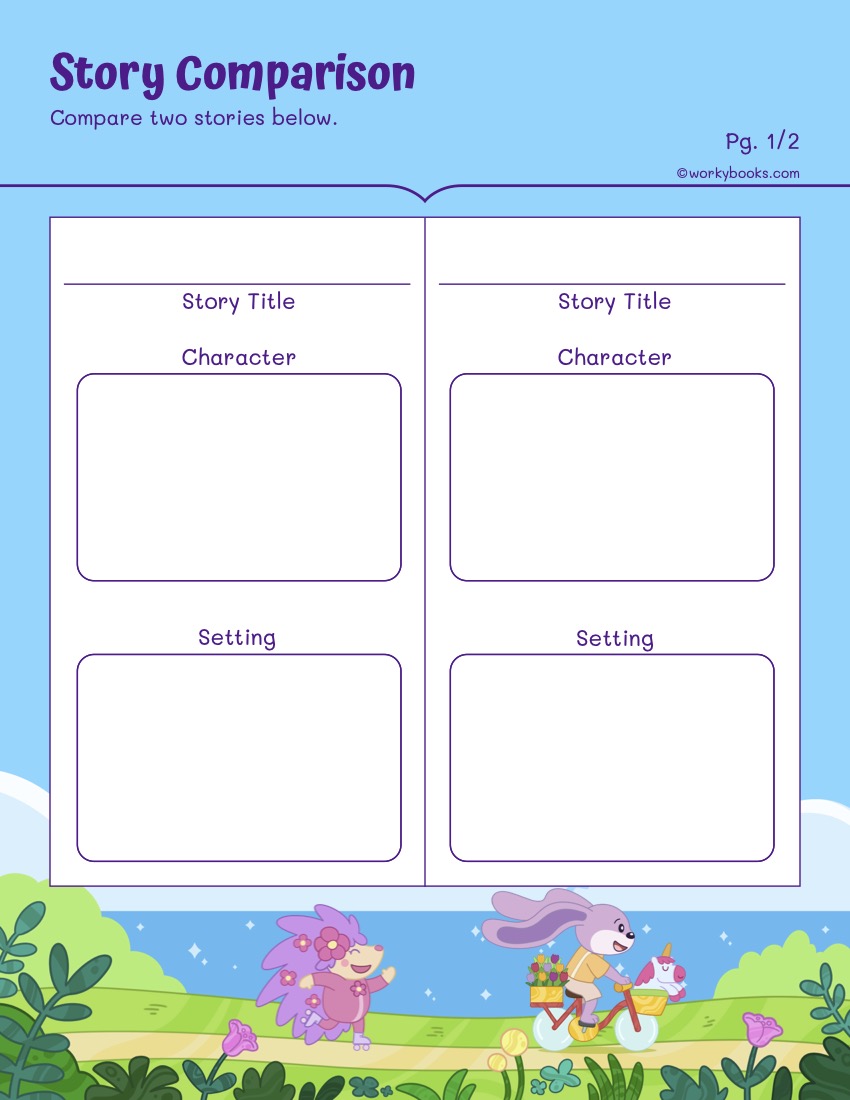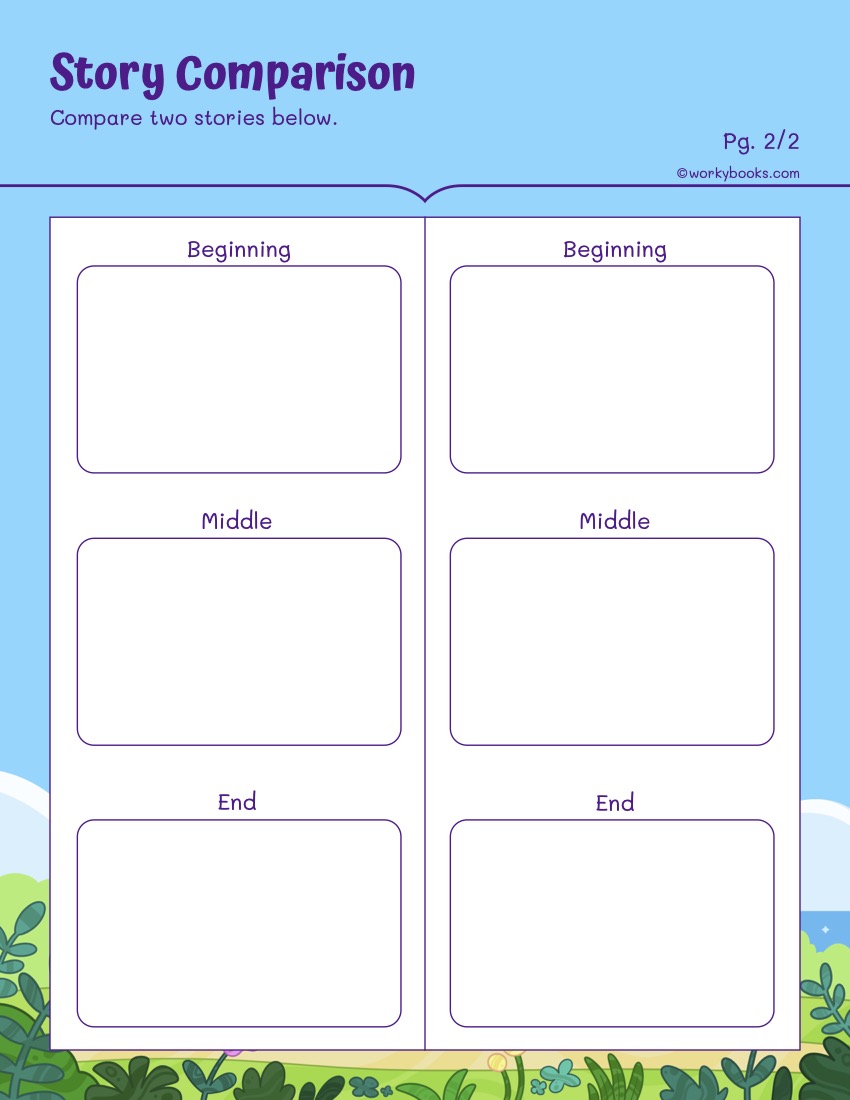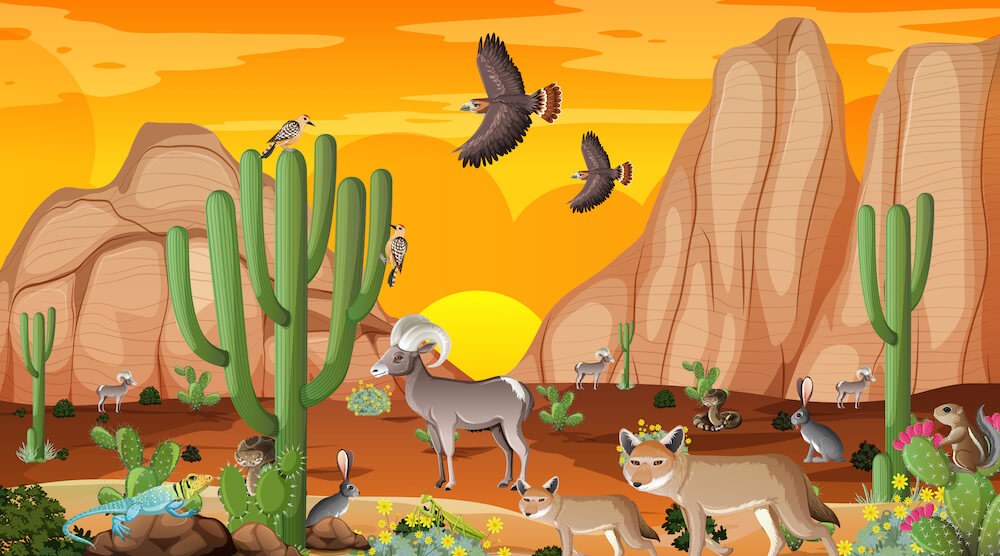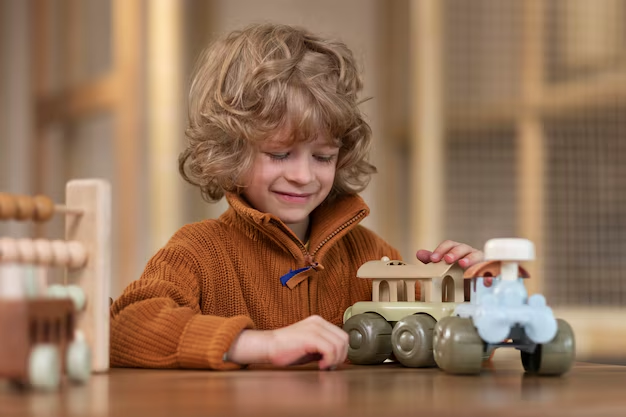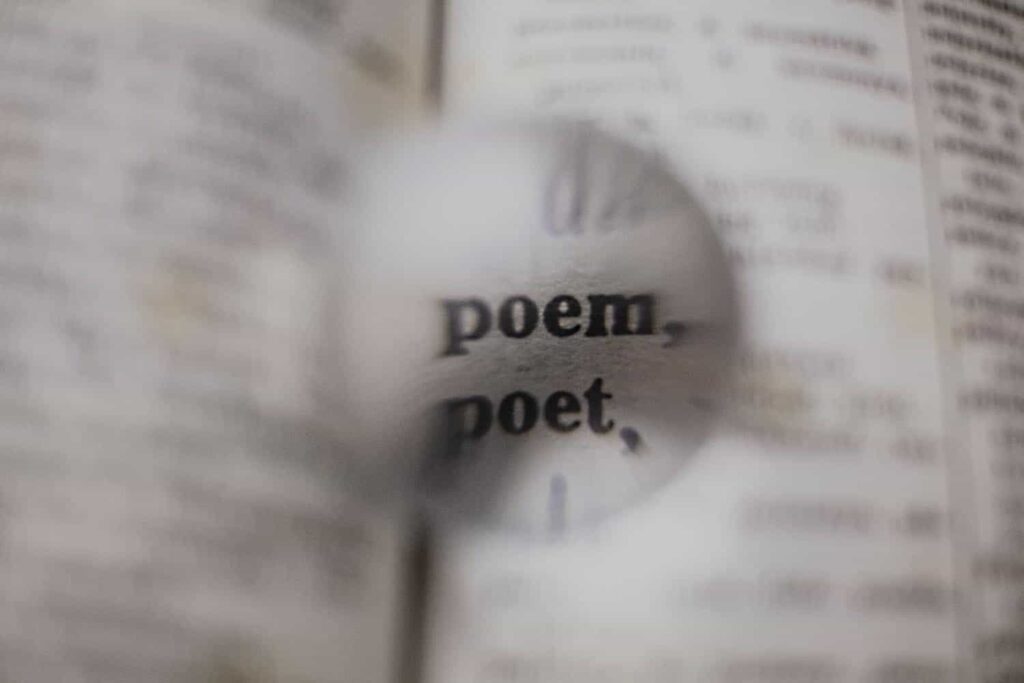2nd Grade Compare and Contrast Worksheets
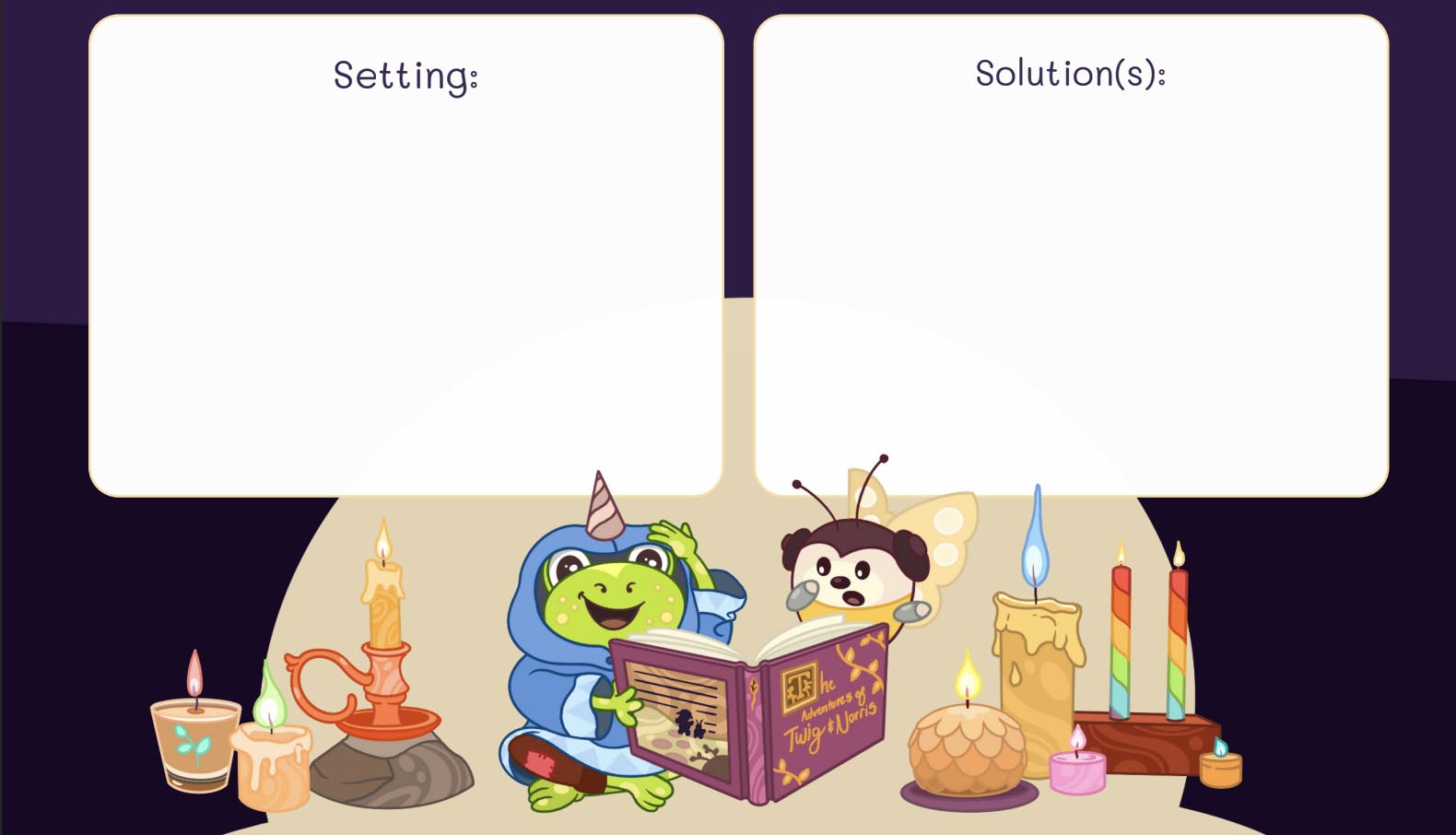
As teachers, developing students’ critical thinking and reading comprehension skills are top priorities. That’s why practicing those compare and contrast standards in 2nd grade ELA is so important!
Bring stories alive for students using standard CCSS.ELA-LITERACY.RL.2.9!
With standard CCSS.ELA-LITERACY.RL.2.9, students analyze how the same story can be shaped across different versions.
This 2nd grade standard builds upon 1st grade foundations. While 1st grade focuses on comparing characters’ adventures, 2nd grade expands to themes, settings, and plot analysis. The depth of critical thinking grows!
In 1st grade, discussion and simple sentences were emphasis areas. Now in 2nd, it’s time to move students toward constructing written paragraphs and essays to express comparisons. This shows their analytical skills in action by supporting observations with text evidence.
Mastering these higher-order ELA skills lays the groundwork for critical comprehension.
With Workybooks’ 3 free compare and contrast graphic organizers, you can actively engage your students in analyzing characters, settings, plots, themes, and story structure across texts. They’ll love digging deeper into narratives and making connections.
Aligned to CCSS.ELA-LITERACY.RL.2.9, our 2nd grade compare and contrast worksheets are teacher-created to help your students:
- Organize similarities and differences between stories visually
- Recognize how authors shape meaning
- Examine story elements like character development and plot progression
- Build skills in analyzing beginnings, middles, and ends
- Support observations with text evidence
- Move from oral responses to written paragraphs
Worksheet 1: Compare and Contrast Graphic Organizer
This graphic organizer serves as an excellent tool for comparing and contrasting two stories. Students are prompted to examine the characters, settings, problems, and solutions of both stories. By filling in the respective columns, students can visually organize their thoughts and identify similarities and differences between the elements of the stories.
Worksheet 2: Story Compare and Contrast Graphic Organizer
This graphic organizer expands upon the previous one by including additional elements for comparison. Students compare the characters and settings of each story and then delve into the challenges faced by the characters, the solutions they employ, and the morals or lessons conveyed in each story. This organizer allows students to explore the deeper meaning and moral implications of the narratives.
Worksheet 3: Story Comparison Graphic Organizer
This graphic organizer further extends the analysis by comparing the beginnings, middles, and ends of the two stories.By focusing on the beginnings, middles, and ends, this graphic organizer helps students recognize the narrative structure and the progression of events within each story. It promotes a deeper understanding of storytelling techniques and how authors develop characters and plotlines.
